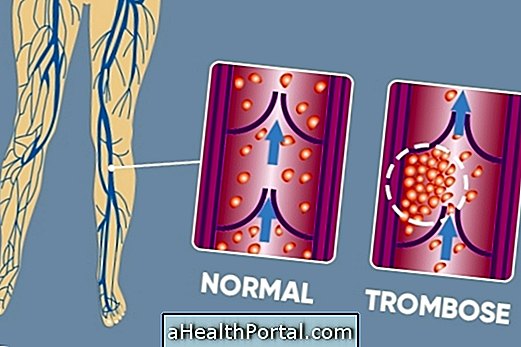Medullary aplasia or aplasia of the bone marrow is a disease characterized by alteration in the functioning of the bone marrow. The bone marrow is responsible for the production of blood cells. When it is compromised by any factor, its production can be reduced or even stopped, which leads to low concentrations of circulating red blood cells, platelets and leukocytes.
Usually the cause of spinal aplasia is not known, but may be associated with exposure to chemical agents, radiation, medications, or being the result of a more serious illness such as Fanconi's anemia. Decreased circulating blood cells can lead to a number of symptoms, such as pallor, shortness of breath, bruising and frequent occurrence of infections.
Treatment is established according to the degree of aplasia and is usually done with the use of immunosuppressive drugs, antibiotics, blood transfusions and, in more severe cases, bone marrow transplantation. The treatment can only be established by the doctor after the blood count and myelogram, which must be requested by the same.

Main symptoms
Because it is a disease in which there is a low number of red blood cells, platelets and leukocytes, the symptoms of the medullar aplasia are related to the decrease of these elements in the blood:
- Excessive tiredness;
- Shortness of breath;
- Pallor;
- Presence of purple spots on the skin;
- Abnormal bleeding;
- Frequent infections.
These symptoms may appear suddenly or more slowly and gradually. In addition there may be headache, tachycardia and dizziness in cases of spinal aplasia.
Spinal cord aplasia can be synonymous with aplastic anemia, since both have the same cause, same symptoms and even treatment. Learn more about aplastic anemia.
Is Spinal Aplasia Cancer?
Spinal cord aplasia is not cancer. Although leukemia is a type of cancer that affects blood cells, there is a change in the marrow that allows the marrow to produce and release more cells of a certain cell line or release cells that have not yet matured, such as myelocytes, for example.
In medullary aplasia, the marrow loses its function, that is, the cells are produced in a much smaller quantity or there may simply be no production.
Possible causes of spinal aplasia
The causes of spinal aplasia are not always known, but are usually related to:
- Prolonged exposure to radiation;
- Use of cytotoxic drugs;
- Exposure to benzene derivatives;
- Exposure to insecticides;
- Infections;
- Use of medicines such as chloramphenicol, for example;
- Autoimmune diseases.
Rarely, spinal cord aplasia is hereditary, but when it does occur it is usually related to Fanconi anemia, which is a rare, serious, genetic disease in which the child has malformations, which can be observed at birth, skin blemishes, renal impairment, short stature and more likely to develop tumors and leukemia. Understand how to identify and treat Fanconi anemia.

How is the diagnosis made?
The diagnosis of medullary aplasia is made by means of a blood test indicated by the general practitioner, the blood count, in which the quantities of red blood cells, leucocytes and platelets circulating in the blood can be checked.
In addition, the doctor may request a myelogram, which is a slightly more invasive examination in which blood and bone marrow aspiration is done on the hip bone or sternum bone to check how the blood cells are being produced . See what the indications are and how the myelogram is done.
How is the treatment done?
The treatment of medullary aplasia is established according to the degree of aplasia. With correct treatment, the marrow aplasia can be reversed, that is, the bone marrow can recover its ability to produce blood cells. Therefore, medullary aplasia has a cure.
The treatment of medullary aplasia can be done with:
- Immunosuppressive drugs, which stimulate the production of blood cells through the bone marrow;
- Antibiotics, to treat possible infections, since the immune system is compromised because of the decrease in the number of leukocytes.
- Blood transfusions, and whole blood, red blood cell concentrate, platelet concentrate or leukocyte concentrate may be transfused to increase the concentration of these constituents in the patient's blood.
In cases of more severe aplasia, it may be necessary to perform bone marrow transplantation, which despite having a high chance of complications, the possibility of cure is greater. See how bone marrow transplantation occurs.
























